Here are the descriptions of a few more sessions I attended at the 2014 NSTA national conference in Boston. These summaries are from my notes and may not accurately reflect the presentations or the presenters’ views. Don’t delay, go to the Boston session schedule and download any files from the presentations you attended, or wish you did.
 I didn’t take photos of these sessions because we mostly talked. Instead I’m posting some photos of beauty in wild places, large and small.
I didn’t take photos of these sessions because we mostly talked. Instead I’m posting some photos of beauty in wild places, large and small.
David Sobel’s work and that of others who ask us to think deeply about environmental education, guide me to refrain from providing a lot of information about nature to young children, and instead try to get them out in it, immersed as much as is possible in a school day. In the Paul F-Brandwein Lecture, “Global Climate Change Meets Ecophobia,” at the conference, Sobel urged us to educate for the purposes of sustaining a healthful environment. He asked us to consider, “How do we engender children who are going to be responsible environmentally focused adults?” and “How do we achieve raising children to care about being environmental stewards? What are the means?”
 He cautions that we don’t want to evoke anxiety and have children develop a phobic response to environmental destruction. No tragedies should be taught before fourth grade. For young children, the focus should be on “What can you do” messages, not “Doom and Gloom” scenarios. We can provide open-ended, deep experiences with nature for young children, such as many hours of play in natural areas, time with parents or other adults fishing and hunting, wading in streams, berry picking and mushroom collecting, riding horses, and reading books about nature.
He cautions that we don’t want to evoke anxiety and have children develop a phobic response to environmental destruction. No tragedies should be taught before fourth grade. For young children, the focus should be on “What can you do” messages, not “Doom and Gloom” scenarios. We can provide open-ended, deep experiences with nature for young children, such as many hours of play in natural areas, time with parents or other adults fishing and hunting, wading in streams, berry picking and mushroom collecting, riding horses, and reading books about nature.
Sobel suggested taking all the environmentally necessary tasks within a school and distributing them to the classes, each grade level doing whatever they are capable of. Kindergartners could be involved in seasonal school beautification, 1st grade–flower garden maintenance, 2nd grade–veggie garden, 3rd grade–keep natural areas clean, 4th grade–run recycling , 5th grade run the composting program, and 6th grade– climate change team to restore a local watershed or other degraded natural area (not a distant forest). When we teach children (in grade 4 and above) about an environmental problem, we need to provide opportunities for action to teach children to become stewards rather than feeling hopeless.
[vimeo]http://vimeo.com/77792707[/vimeo]Take a look at one of the films he suggested, Nature Works—Global Gardens by the Nature Conservancy, about urban nature education in Washington, DC. For more from David Sobel about environmental education, read his books or an article, “Look, Don’t Touch: The problem with environmental education” in the July/August 2012 issue of Orion magazine. A forum discussion in the NSTA Learning Center focuses on Sobel’s talk–share your thoughts on the talk or the topic. Go to the Early Childhood forum and look for the topic “Brandwein Lecture “Global Climate Change Meets Ecophobia,” NSTA Boston Conference 2014.”
An hour isn’t long enough to fully explore a science education curriculum but the presenters from the ECHOS Early Childhood Hands-On Science, from the Museum of Science in Miami gave us a look at several lessons. They use scripted science lessons to help teachers who are first beginning to teach science concepts. I could have used another hour to become more familiar with the ECHOS curriculum. It always helps me consider how my students might approach and learn from an activity by doing them myself beforehand. I see possibilities for connecting to an on-going inquiry that hadn’t occurred to me when just reading about it. Learn more at http://miamisci.org/echos/

 Beth Clark-Thomas and Nancy Varian from Malone University, Canton, Ohio talked about the value of the NSTA Early Childhood Science Education Position Statement in their presentation, “Nature”-ally Good Science Teaching in Early Childhood Education.” One strategy they use to connect with families is to make backpacks with materials for children to take home to investigate their own backyards—a book, digging and sifting materials, and a way to record observations. They suggested using the typical School Open House as a Science Night to involve parents while instructing them on all the academics that happen while investigating science concepts.
Beth Clark-Thomas and Nancy Varian from Malone University, Canton, Ohio talked about the value of the NSTA Early Childhood Science Education Position Statement in their presentation, “Nature”-ally Good Science Teaching in Early Childhood Education.” One strategy they use to connect with families is to make backpacks with materials for children to take home to investigate their own backyards—a book, digging and sifting materials, and a way to record observations. They suggested using the typical School Open House as a Science Night to involve parents while instructing them on all the academics that happen while investigating science concepts.
 Participant input and interaction during sessions contributes to the learning! One participant told how she recreated a temporary pond in the classroom using a baby pool to acclimate children so they would be comfortable investigating in the actual pond. Another participant asked a question about children’s questioning, “How do we find the balance between staying on topic/task and being open to follow children’s questions?” Beth Clark-Thomas suggests using guided inquiry, and telling the children, “Asking questions shows you are smart.” Another participant told how he used The Right Question Institute to help him get his students to ask questions. He uses those questions to deliver content when the students are ready for it and has found that he has time to teach all the required content. Another participant noted that teachers are more likely to do a science activity if the materials are provided in a kit.
Participant input and interaction during sessions contributes to the learning! One participant told how she recreated a temporary pond in the classroom using a baby pool to acclimate children so they would be comfortable investigating in the actual pond. Another participant asked a question about children’s questioning, “How do we find the balance between staying on topic/task and being open to follow children’s questions?” Beth Clark-Thomas suggests using guided inquiry, and telling the children, “Asking questions shows you are smart.” Another participant told how he used The Right Question Institute to help him get his students to ask questions. He uses those questions to deliver content when the students are ready for it and has found that he has time to teach all the required content. Another participant noted that teachers are more likely to do a science activity if the materials are provided in a kit.
Presenters of “Developing a Partnership for STEM in Early Childhood”–Marcia Edson of the Boston University: Boston, MA, Jeffrey Mehigan of the Museum of Science: Boston, MA, and Nancy Sableski of the The Arnold Arboretum of Harvard University: Jamaica Plain, MA–shared how their collaboration introduced preservice teachers in Edson’s full semester science methods course to STEM education. They use the 3 Dimensions of the Next Generation Science Standards with preservice teachers, including teaching the Science and Engineering Practices. The preservice teachers also learn about Science Talk—Scientists ask questions, make claims to respond to questions, use evidence to support claims, and use reasoning to explain ideas.
Edson said, “I have learned an enormous amount from my partners—our collegiality has allowed us to learn from each other.” Her students remember sink & float, planting, and hatching chicks from their own early science education. But they may be terrified of the natural world, and uncomfortable with sitting on grass or connecting with mud and worms. The museums in Boston are free to students and previously her students rarely took advantage of this. They use the internet mostly, not the other rich resources. Her challenge is to get students to branch out and this is why she reached out to the partners, the Museum of Science and Arnold Arboretum. Edson asked the partners, “How can we make these visits more than a fieldtrip?”
 Jeff Mehigan designed experiences that allow students to engage in inquiry based science and have access to the museum, including the Educator Resource Center in the Lyman Library. He encourages them to use trade books, to focus on the active learning in science, not solely content, and to find the patterns, such as, sorting skulls into predator-prey groups by teeth shape or eye sockets (“eyes in front likes to hunt, eyes on sides likes to hide”).
Jeff Mehigan designed experiences that allow students to engage in inquiry based science and have access to the museum, including the Educator Resource Center in the Lyman Library. He encourages them to use trade books, to focus on the active learning in science, not solely content, and to find the patterns, such as, sorting skulls into predator-prey groups by teeth shape or eye sockets (“eyes in front likes to hunt, eyes on sides likes to hide”).

Nancy Sableski spoke about the Arnold Arboretum in Boston—it is free, open 365 days a year, and is maintained and administered by the City of Boston and Harvard University. Some areas are “minimally curated”. She runs the Field Studies program with area public schools–2 hour field study in small groups with trained volunteers who love the natural world and love to share it. The volunteers are good models for preservice teachers who also go through the Field Studies program! I’m going to use this multi-sensory experience Sableski shared—students lie down on a tarp in a garden, blindfolded. They experience with their senses of hearing, smell, and touch (including feeling of the ground under them). Then they reflect on their observations by pairing with another and sharing their observations, and report back to the larger group. I wonder if young children will be comfortable lying on the ground and grass?
Edson noted the results of this partnership: develops confidence in students, students are more comfortable with the natural world because they participated as a student while watching and listening to the highly skilled volunteers modeling how to guide and teach (calm voices, curiosity, encouragement to look deeper, supportive). Students see the three leaders reaching out to each other for information and ask questions, working together, and being okay with asking a question and collaborating. The students now have direct connections to mentors and places for future support as they move into teaching positions in the area. They come back to the museum with friends to use the resources and take students to do research.
 “Using Formative Assessment to Support Science Teaching and Learning in Pre-K” had the advantage of being one of the last sessions of the conference so participants were full of ideas and now comfortable discussing what they heard and what they thought. Cindy Hoisington, of Education Development Center, Inc. in Waltham, MA presented about a professional development program in science that uses formative assessment to build teachers’ science knowledge and skills and support young children’s science learning. She stated, and participants agreed, that language and science are so mutually supportive. Very simple prompts and questions can provoke a lot of responses from children to make their ideas and thoughts explicit. The underpinning of the work is George Forman’s quote, “Experience is not the best teacher…reflection on experience that makes it educational.” The teacher is central to promoting children’s reflection on their science experiences as well as his/her own reflection on teaching and learning.
“Using Formative Assessment to Support Science Teaching and Learning in Pre-K” had the advantage of being one of the last sessions of the conference so participants were full of ideas and now comfortable discussing what they heard and what they thought. Cindy Hoisington, of Education Development Center, Inc. in Waltham, MA presented about a professional development program in science that uses formative assessment to build teachers’ science knowledge and skills and support young children’s science learning. She stated, and participants agreed, that language and science are so mutually supportive. Very simple prompts and questions can provoke a lot of responses from children to make their ideas and thoughts explicit. The underpinning of the work is George Forman’s quote, “Experience is not the best teacher…reflection on experience that makes it educational.” The teacher is central to promoting children’s reflection on their science experiences as well as his/her own reflection on teaching and learning.
The program, “Cultivating Young Scientists” is a collaboration with Connecticut Science Center in Hartford, CT. Teachers self-select and apply to be accepted. They have administrative support because their administrators were recruited first! The program includes guides (books) and professional development, building pedagogical content knowledge over 42 hours of instruction with group and individual mentoring. The pedagogical content knowledge was an overlapping of science content knowledge, knowledge of teaching frameworks and strategies, and knowledge of child development and learning. They use (and practice) an Inquiry Learning Cycle diagram that shows the dynamic spiraling structure of inquiry, Engage–Explore–Reflect—spiraling and continuing. Hoisington cautioned that children should have an opportunity to do these actions but teachers should not check each off action as children do it because they should be encouraged to return to it as inquiry progresses. Research from 2009-2013 saw huge gains in teaching capacity and and some gains in students’ science learning as well.
 A paper based tool, a form for teachers to fill out as they work with small group of up to 4 students, was designed to promote teacher reflection on their children’s emerging theories and understanding, with space for recording children’s behavior and conversation in response to prompts, and attach photos and other writing. It asked what next steps they want to take.This reflection helps teachers make sense of the documentation, and determine what other indicators they see that reflect learning and children’s conceptual understanding. Hoisington talked about how teachers can find out children’s early understandings, or emergent conceptions, through science talk and reflection on their work. Once teachers know what children think, they can plan what to teach or experiences to provide.
A paper based tool, a form for teachers to fill out as they work with small group of up to 4 students, was designed to promote teacher reflection on their children’s emerging theories and understanding, with space for recording children’s behavior and conversation in response to prompts, and attach photos and other writing. It asked what next steps they want to take.This reflection helps teachers make sense of the documentation, and determine what other indicators they see that reflect learning and children’s conceptual understanding. Hoisington talked about how teachers can find out children’s early understandings, or emergent conceptions, through science talk and reflection on their work. Once teachers know what children think, they can plan what to teach or experiences to provide.
A stimulating discussion took place throughout the session—thanks to Cindy for encouraging our questions! Read more about Cultivating Young Scientists at http://www.edc.org/projects/cultivating_young_scientists_expanding_foundations_science_literacy_cys
I could not possibly relate everything about my experience at the NSTA national conference in Boston that made me glad to be an early childhood science educator, but the highlights were learning from the presenters, discussion with other participants and getting a peek at the beautiful city of Boston. Thank you to all who contributed to this great professional development.




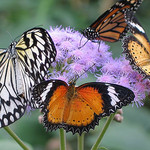
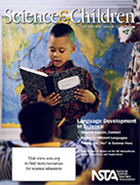 Science and Children
Science and Children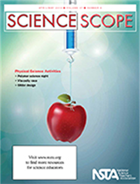 Science Scope
Science Scope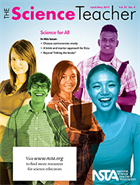 he Science Teacher
he Science Teacher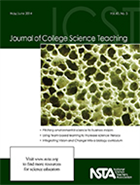 Journal of College Science Teaching
Journal of College Science Teaching I’m working with a beginning teacher, and I’d like to share some ideas on the challenges of the end of the year, such as how to keep students engaged and ideas for the summer break.
I’m working with a beginning teacher, and I’d like to share some ideas on the challenges of the end of the year, such as how to keep students engaged and ideas for the summer break. 
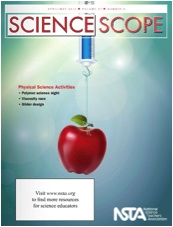



 Beth Clark-Thomas and Nancy Varian from Malone University, Canton, Ohio talked about the value of the
Beth Clark-Thomas and Nancy Varian from Malone University, Canton, Ohio talked about the value of the  Participant input and interaction during sessions contributes to the learning! One participant told how she recreated a temporary pond in the classroom using a baby pool to acclimate children so they would be comfortable investigating in the actual pond. Another participant asked a question about children’s questioning, “How do we find the balance between staying on topic/task and being open to follow children’s questions?” Beth Clark-Thomas suggests using
Participant input and interaction during sessions contributes to the learning! One participant told how she recreated a temporary pond in the classroom using a baby pool to acclimate children so they would be comfortable investigating in the actual pond. Another participant asked a question about children’s questioning, “How do we find the balance between staying on topic/task and being open to follow children’s questions?” Beth Clark-Thomas suggests using 


